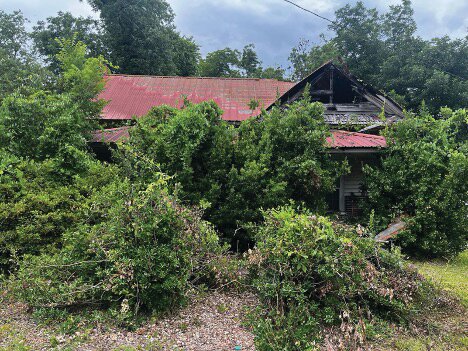Mayor Greg Bennett sees Swainsboro’s biggest problem as threefold, “We don’t have affordable housing, we have crime, and nobody is building homes inside the city limits.”
The city is not alone. According to the National Low Income Housing Coalition, “Nationally, there is a shortage of more than 7 million affordable homes for 10.8 million low-income families.” Along with this there is ‘no state or county where a renter working full-time at minimum wage can afford a two-bedroom apartment’.
The old adage that rural areas can pay lower wages because the cost of living is lower doesn’t always pan out, especially with the rising cost of houses and rent.
Starting off, Swainsboro city police officers make $19.80 an hour and have a 42-hour work week which comes to an average of just over $830 weekly, $3,300 monthly, and roughly $43,243 annually (before taxes). The estimated base salaries of local firefighters and beginning teachers are roughly $4,000 below this salary.
On Zillow, Swainsboro house prices presently vary from $75,000 to $399,000. Of the 19 houses listed, five are below $150,000, three are between $150,000 and $250,000 and eleven are over $250,000. Several of the houses listed under $150,000 are in need of renovations, placing their true cost higher. The only rental currently listed online for the area is a one bedroom/one bath for $1,200 per month.
A common way of determining the affordability of a house is to use the 28% rule to keep mortgage or rent payments at or under 28% of the monthly salary. Applying this to a local police officer’s salary would mean roughly $924 is available for rent ($3,300 x .28) barring additional income or savings. With an average down payment, this often puts houses over $150,000 and rents of $1,200 out of reach for local government employees such as police, firefighters and teachers if there’s no assistance.
In Swainsboro subsidized housing is available for those at the poverty level and many houses are on the market for two income families or citizens making higher wages, but the city has very few home-buying options for the single, lower-to-middle class workforce.
Bennett has had plans in the works for over a year now for an affordable housing neighborhood where new starter homes would sell for $150,000. But these plans recently met a hitch. The site cleared for the houses requires a sewer line that would cost the city $250,000 to run. Even though there are grants that could pay for it, he knows how it would look for the mayor to write a grant for his own subdivision.
Yet there’s another possibility, he says, “We have two things: one, the resources to build at least two $125,000 houses and two, the lots.” Specifically, the city owns 46 buildable, residential lots.
‘);
“We’ve tried to contract companies to auction them off for us,” he says. “They will not do it because the lots would not generate enough revenue to do all the advertising, legal work and to put it on a website for $250. There’s no upside for them. And we’re stuck with all of these lots and they are ugly.”
One issue with the city bidding out projects is mainly large companies apply, which shoots the price up. To make it possible for smaller contractors to bid, Bennett says the money needs to go to a nonprofit run by the city. Since nonprofits have different regulations, smaller local contractors could bid and provide 1,000 square foot homes at $125 per square foot pricing them at $125,000.
These houses would be offered to the public in tiers. The first tier would be city police recruits. The recruits would be able to live in the house rent-free for a year. After the first year, they could decide to continue living there for $700 in rent per month or purchase the house at cost for $125,000 or leave. Those choosing to rent could purchase the house at a later date and their rent would serve as a down payment. If no recruits are interested in the housing, the second tier would be anyone who works in the police department.
“If there’s no one in need of the housing at these two tiers, the third tier would be anyone who works for the fire department followed by anyone who works for the city,” says Bennett.
Finally, any houses not occupied by police, firefighters or city workers would be offered to the general public.
“The only thing about offering the houses to the general public,” Bennett adds, “is that the first year would not be rent-free.” Still, all residents would be able to use previously paid rent as a down payment on the house if they chose to buy it later.
Eventually, as houses are bought, other blighted properties will go through the same restoration process with hopes that ‘in ten years the city’s non-profit could build 50 homes while owning only four’.
He’s discussed the plan with city administrator Herman Middlebrooks and city attorney Jon Levis for the past six weeks asking them to come up with reasons why it wouldn’t work. So far, they haven’t found any.
Swainsboro Police Chief Randy Ellison sees the plan as a “possible step the city could take to entice future qualified personnel to choose the SPD over other agencies.”
The proposal to turn blighted properties into affordable housing relies upon the support of Swainsboro citizens and city council. At last week’s council workshop, the plan was supported by some members and met with hesitancy by others. The council will vote on the plan at the June 10 meeting at city hall, 6 pm.
Promote Your Business with Us!
Looking to connect with the local community? Our platform offers a direct way to reach engaged readers in your local area.
From banner ads to sponsored content, we offer flexible advertising solutions to fit your business needs.
Get in touch to explore how we can help you grow!
CONTACT US NOW

